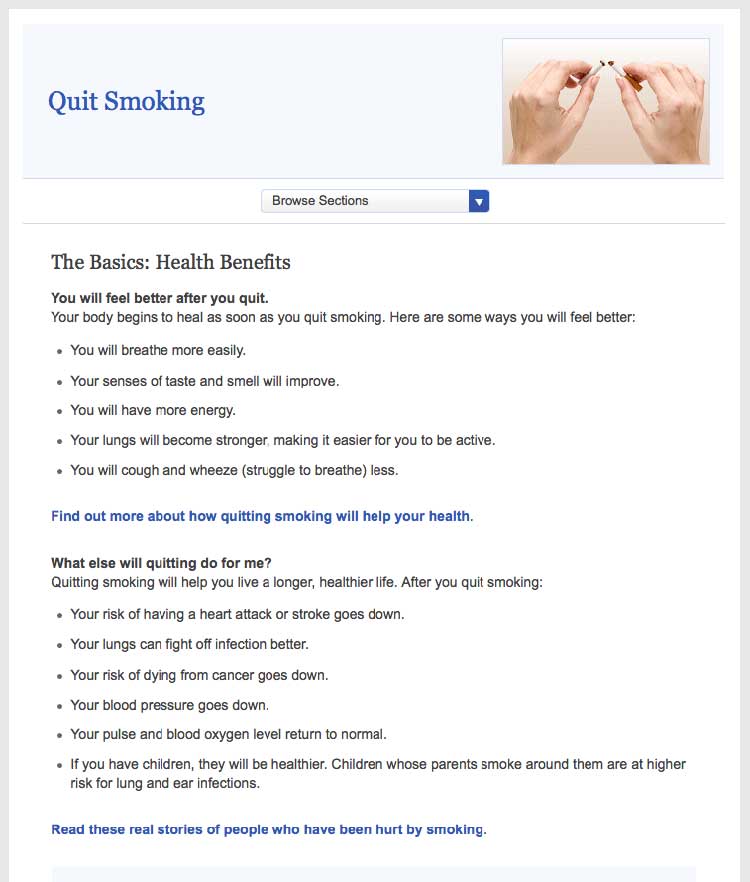2.4 Stay positive. Include the benefits of taking action.
Users overwhelmingly prefer a positive tone, so make your case without being too negative. During card-sorting exercises, users prioritized information on motivators and overcoming barriers to behavior change — not information about the risks and barriers themselves.8,27,29,39,41,42,43,44
Give users motivation to make a change.
Users want to know what they can gain from changing their behavior.
Physical activity can improve your heart health—not to mention help you feel better in your daily life!
This healthfinder.gov page clearly lists the benefits of quitting smoking instead of focusing on the risks of continuing to smoke.

Source: https://health.gov/myhealthfinder/topics/health-conditions/diabetes/quit-smoking
Be positive.
Instead of telling people what not to do, give users positive reasons to change their behavior.
- Before:
- Never ride a bike without a helmet.
- After:
- Wear a helmet every time you ride a bike.
When choosing language, limit the use of “don’t.” This automatically sets up negative framing. Additionally, try not to use “should”—it can sound “preachy” or condescending.
Focus on tips and tools for overcoming barriers—not on the barriers themselves.
Users need to overcome many perceived and actual barriers on the road to health behavior change. Be realistic—it’s important to acknowledge these barriers and continue to offer encouragement and motivation.45
Remember, it’s not all or nothing. Even 10 minutes of activity is better than none! Try walking for 10 minutes a day a few days a week.
Quitting smoking is hard, but millions of people have done it successfully. In fact, more than half of Americans who have ever smoked have quit. You could be one of them!
Source: https://health.gov/myhealthfinder/topics/health-conditions/diabetes/quit-smoking